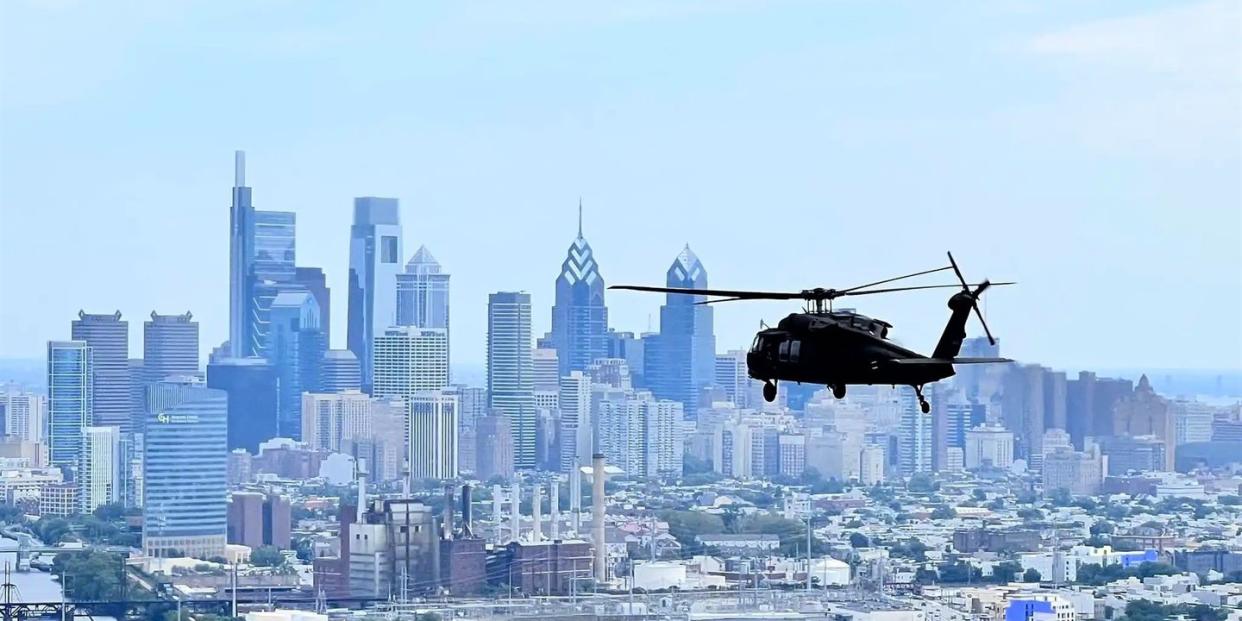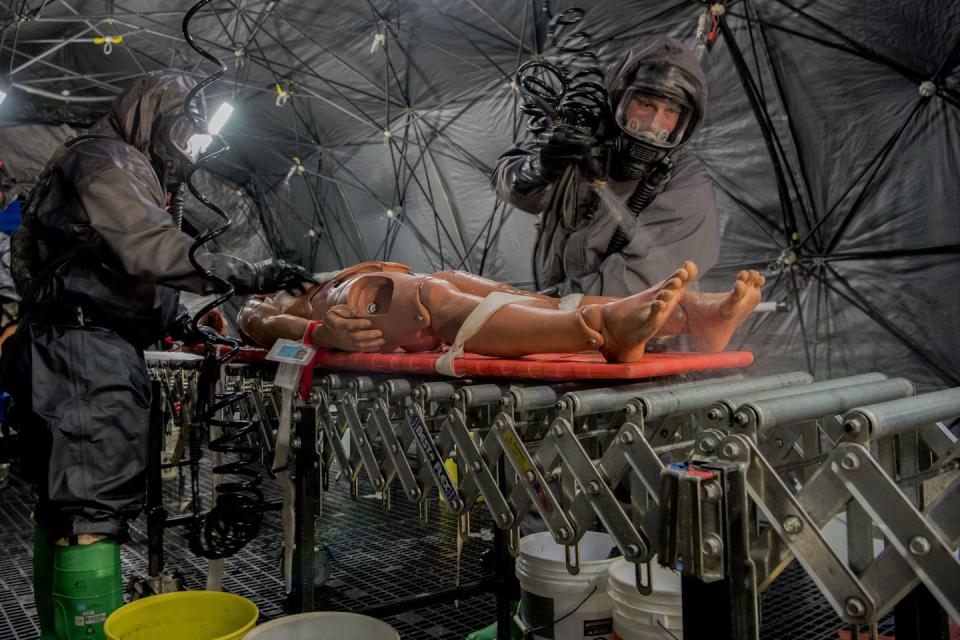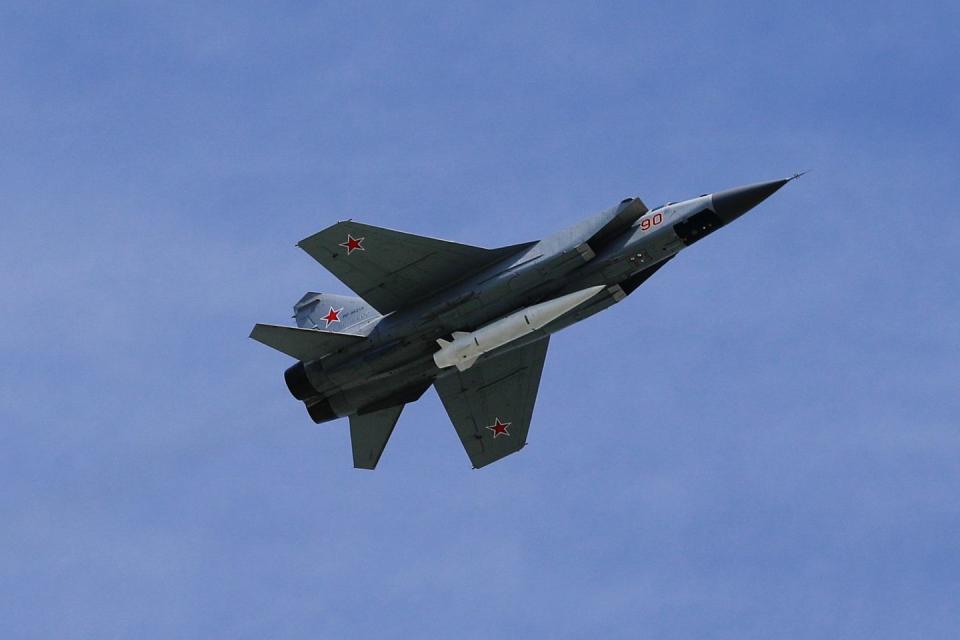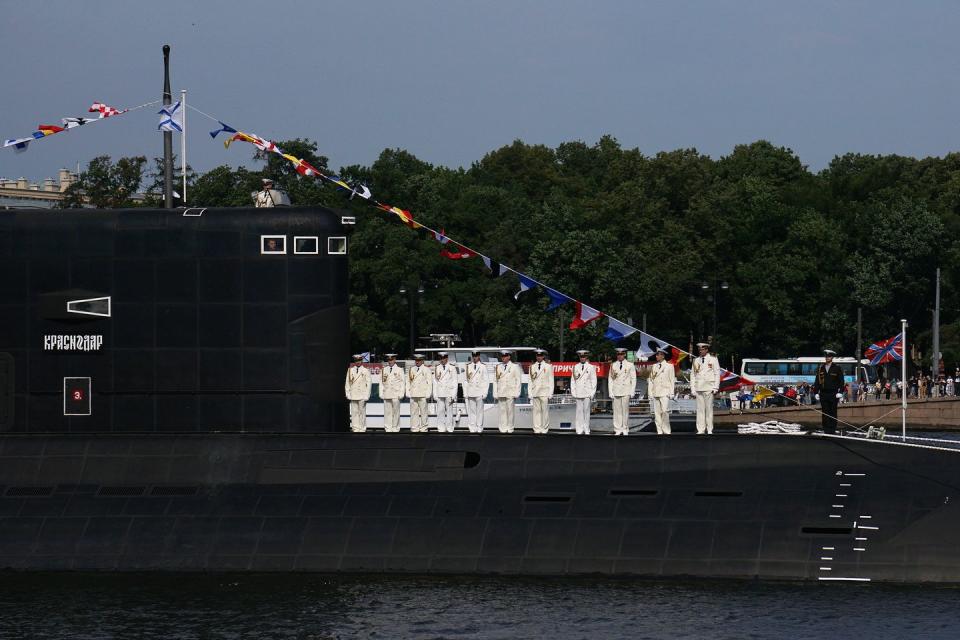National Guard Simulates ‘America’s Worst Day’ With Hypersonic Missile Exercise

The U.S. military recently wrapped up an exercise in Philadelphia, Pennsylvania, inspired by the war in Ukraine.
It centered on a special National Guard task force charged with responding to attacks involving weapons of mass destruction.
Russian missile attacks across Ukraine, including those that have affected civilians, likely inspired the exercise.
A U.S. Army National Guard exercise, designed to simulate a response to a hypersonic missile attack, just wrapped up last week in Philadelphia. It focused on an unnamed adversary using ultra-fast hypersonic weapons on cities across the Eastern Seaboard. The Pentagon almost certainly drew the scenario directly from the war in Ukraine, in which Russia has been using missiles against targets in major cities.
In this scenario, a hypersonic missile strikes Lincoln Financial Field, demolishing the stadium and leaving a string of casualties across the city. A simulated train derailment further complicated the scenario, with the train carrying poisonous gas. Military and first responders had to not only rescue civilians, but also decontaminate them of chlorine.

“We’re talking America’s worst day,” Lt. Col. Brian Higgins, who oversaw the exercise, tells the Philadelphia Inquirer.
The exercise involved “400 members of the United States Army, National Guard, and Coast Guard and 150 members of Philadelphia Fire, Police, Office of Emergency Management, FEMA, and five local hospitals,” according to the Inquirer. National Guard helicopters made low-altitude flights over the city and established military hospitals to triage and treat actors role-playing as panicked and injured civilians. (Dummies simulated the civilians contaminated with chlorine gas.)
Task Force 46, a multi-state Guard Task Force built around the Michigan National Guard’s 46th Military Police Command, was in charge of the exercise. Task Force 46 is a national response force designated to respond to “catastrophic chemical, biological, radiological, and nuclear incidents” across the United States.

The Inquirer describes Task Force 46 as “a specialized homeland security unit that could only be activated by a presidential declaration.” While that’s true, that’s also true for the entire National Guard. On a day-to-day basis, the Governor of Michigan controls the 46th Military Police Command, but the President may activate Task Force 46 for national active duty, “federalizing” it.
Hypersonic missile strikes on New York City, Chicago, and Philadelphia took place during the exercise, presumably as part of a wider war scenario with another major power. The scenario was a blend of hypersonic weapons, the new threat du jour, and elements of Russia’s missile war in Ukraine. In early May, Pentagon officials told DefenseOne Russia had fired 2,100 missiles of all types at targets in Ukraine, including 10 to 12 hypersonic weapons. Also in May, U.S. officials said Russia’s hypersonic missiles were “underperforming” in Ukraine.

Hypersonic weapons are designed to fly at Mach 5 (3,836 miles per hour) or faster. Rocket engines typically power hypersonics to white-hot speeds before the missiles detach from the rocket motor and glide the rest of the way to the target. The weapon’s raw speed is designed to give defenders less time to react, and many hypersonic weapon flight profiles are currently invulnerable to regular surface-to-air missiles—but only when the missile is operating at a super-fast speed. As the hypersonic glide vehicle approaches its target, it dramatically slows and is easier to intercept.
Russia maintains its own arsenal of hypersonic weapons, including the Zircon ship-launched missile, Kinzhal air-launched missile, and Avangard strategic hypersonic weapon. It’s not clear why Russia has wasted hypersonic weapons, which tend to be more expensive than cruise missiles or ballistic missiles, on targets in Ukraine. Russia may be using hypersonics as a way to test their effectiveness on a real battlefield and to intimidate Ukraine into suing for peace.

Could an adversary like Russia or China actually launch hypersonic weapons against targets in the U.S.? Yes, but it’s unlikely. Russian submarines have the capability to launch Zircon hypersonic missiles against the East Coast, but striking a city, let alone a sports stadium, wouldn’t get Russia any closer to winning a war. Zircon also has a shorter range than conventional, subsonic cruise missiles, meaning Russian subs would have to creep closer to their target to launch their weapons. That puts them at greater risk of being detected—and destroyed—by the U.S. Navy.
You Might Also Like

